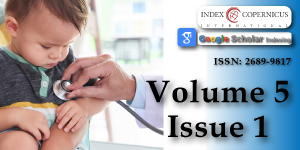What, how and when should we instruct mothers about neonatal jaundice
Main Article Content
Article Details
Copyright (c) 2022 Wennberg RP.

This work is licensed under a Creative Commons Attribution 4.0 International License.
Johnson LH, Bhutani VK, Brown AK. System-based approach to management of neonatal jaundice and prevention of kernicterus. J Pediatr. 2002 Apr;140(4):396-403. doi: 10.1067/mpd.2002.123098. PMID: 12006952.
Bhutani VK, Johnson L, Sivieri EM. Predictive ability of a predischarge hour-specific serum bilirubin for subsequent significant hyperbilirubinemia in healthy term and near-term newborns. Pediatrics. 1999 Jan;103(1):6-14. doi: 10.1542/peds.103.1.6. PMID: 9917432.
Shapiro SM. Definition of the clinical spectrum of kernicterus and bilirubin-induced neurologic dysfunction (BIND). J Perinatol. 2005 Jan;25(1):54-9. doi: 10.1038/sj.jp.7211157. PMID: 15578034.
Donneborg ML, Hansen BM, Vandborg PK, Rodrigo-Domingo M, Ebbesen F. Extreme neonatal hyperbilirubinemia and kernicterus spectrum disorder in Denmark during the years 2000-2015. J Perinatol. 2020 Feb;40(2):194-202. doi: 10.1038/s41372-019-0566-8. Epub 2020 Jan 6. PMID: 31907395.
Alkén J, Håkansson S, Ekéus C, Gustafson P, Norman M. Rates of Extreme Neonatal Hyperbilirubinemia and Kernicterus in Children and Adherence to National Guidelines for Screening, Diagnosis, and Treatment in Sweden. JAMA Netw Open. 2019 Mar 1;2(3):e190858. doi: 10.1001/jamanetworkopen.2019.0858. PMID: 30901042; PMCID: PMC6583272.
Wennberg RP, Watchko JF, Shapiro SM. Maternal Empowerment - An Underutilized Strategy to Prevent Kernicterus? Curr Pediatr Rev. 2017;13(3):210-219. doi: 10.2174/1573396313666170828112038. PMID: 28847288.
Olusanya BO, Osibanjo FB, Slusher TM. Risk factors for severe neonatal hyperbilirubinemia in low and middle-income countries: a systematic review and meta-analysis. PLoS One. 2015 Feb 12;10(2):e0117229. doi: 10.1371/journal.pone.0117229. PMID: 25675342; PMCID: PMC4326461.
Olusanya BO, Emokpae AA, Zamora TG, Slusher TM. Addressing the burden of neonatal hyperbilirubinaemia in countries with significant glucose-6-phosphate dehydrogenase deficiency. Acta Paediatr. 2014 Nov;103(11):1102-9. doi: 10.1111/apa.12735. Epub 2014 Aug 15. PMID: 24990658.
Slusher TM, Zamora TG, Appiah D, Stanke JU, Strand MA, Lee BW, Richardson SB, Keating EM, Siddappa AM, Olusanya BO. Burden of severe neonatal jaundice: a systematic review and meta-analysis. BMJ Paediatr Open. 2017 Nov 25;1(1):e000105. doi: 10.1136/bmjpo-2017-000105. PMID: 29637134; PMCID: PMC5862199.
Diala UM, Wennberg RP, Abdulkadir I, Farouk ZL, Zabetta CDC, Omoyibo E, Emokpae A, Aravkin A, Toma B, Oguche S, Slusher T; *On behalf of the Stop Kernicterus In Nigeria (SKIN) study group. Patterns of acute bilirubin encephalopathy in Nigeria: a multicenter pre-intervention study. J Perinatol. 2018 Jul;38(7):873-880. doi: 10.1038/s41372-018-0094-y. Epub 2018 Mar 28. PMID: 29593357.
Olusanya BO, Ogunlesi TA, Slusher TM. Why is kernicterus still a major cause of death and disability in low-income and middle-income countries? Arch Dis Child. 2014 Dec;99(12):1117-21. doi: 10.1136/archdischild-2013-305506. Epub 2014 Aug 14. PMID: 25123403.
WHO recommendations on maternal and newborn care for a positive postnatal experience 2022 Geneva: World Health Organization; 2022. Licence: CC BY-NC-SA 3.0 IGO 81 ISBN 978-92-4-004598-9 (electronic version).
Darmstadt GL, Hamer DH, Carlin JB, Jeena PM, Mazzi E, Narang A, Deorari AK, Addo-Yobo E, Chowdhury MA, Kumar P, Abu-Sarkodie Y, Yeboah-Antwi K, Ray P, Bartos AE, Saha SK, Foote E, Bahl R, Weber MW. Validation of visual estimation of neonatal jaundice in low-income and middle-income countries: a multicentre observational cohort study. BMJ Open. 2021 Dec 31;11(12):e048145. doi: 10.1136/bmjopen-2020-048145. PMID: 34972760; PMCID: PMC8720979.
American Academy of Pediatrics Subcommittee on Hyperbilirubinemia. Management of hyperbilirubinemia in the newborn infant 35 or more weeks of gestation. Pediatrics. 2004 Jul;114(1):297-316. doi: 10.1542/peds.114.1.297. Erratum in: Pediatrics. 2004 Oct;114(4):1138. PMID: 15231951.
National Collaborating Centre for Women's and Children's Health Neonatal jaundice. NICE, London 2010 https://www.nice.org.uk/guidance/cg98.
Wennberg RP, Oguche S, Imam Z, Farouk ZL, Abdulkadir I, Sampson PD, Slusher TM, Bode-Thomas F, Toma BO, Yilgwan CS, Shwe D, Ofakunrin AO, Diala UM, Isichei C, Pam V, Hassan Z, Abdullahi SU, Usman F, Jibir BW, Mohammed IY, Usman HA, Abdusalam M, Kuliya-Gwarzo A, Tsiga-Ahmad FI, Umar L, Ogala WN, Abdullahi F, Hassan L, Purdue S, Lund T, Coda-Zabetta CD. Maternal Instruction About Jaundice and the Incidence of Acute Bilirubin Encephalopathy in Nigeria. J Pediatr. 2020 Jun;221:47-54.e4. doi: 10.1016/j.jpeds.2020.01.050. Epub 2020 Mar 4. PMID: 32145967.
Stop Kernicterus International: http://skibilimetrixusa.azurewebsites.net

